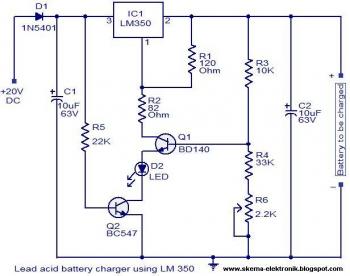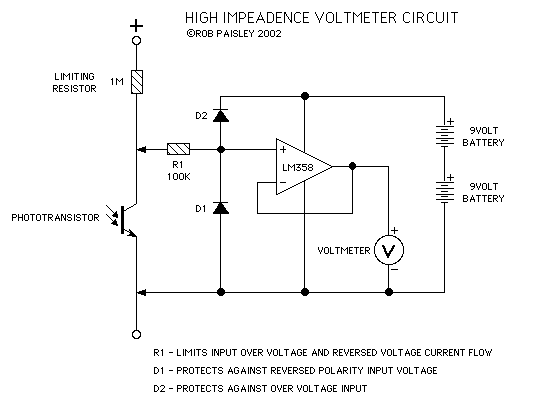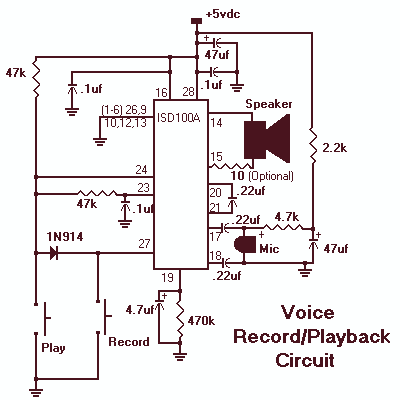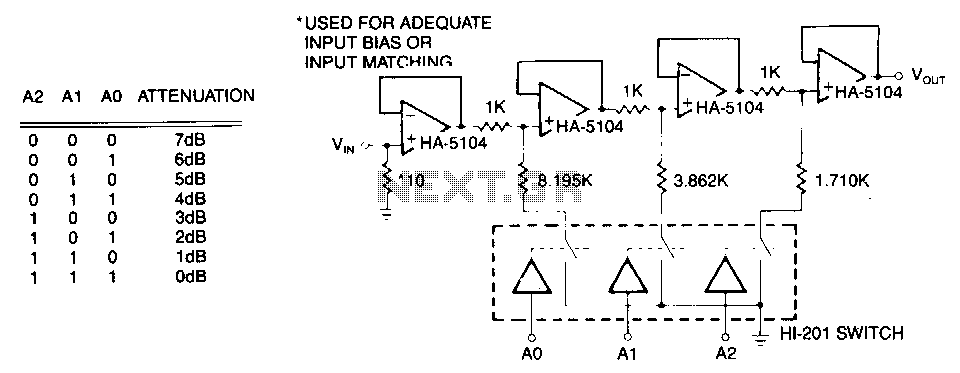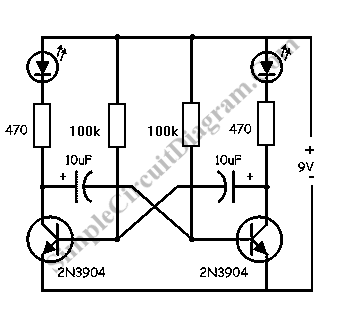
Temperature to Digital ConverterCircuit using LM35
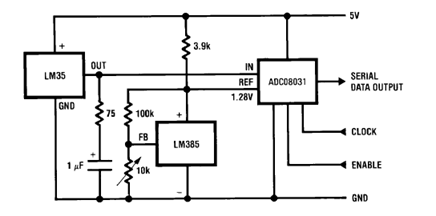
The circuit illustrates a Temperature to Digital Converter diagram utilizing the LM35 sensor, which includes a beneficial bypass capacitor connected from VIN to ground and a series RC damper.
The described circuit employs the LM35 temperature sensor, a precision integrated circuit that outputs an analog voltage proportional to the temperature in degrees Celsius. The LM35 is known for its ease of use, as it does not require any external calibration and offers a linear output of 10 mV per degree Celsius.
In this configuration, the bypass capacitor serves a critical role in stabilizing the power supply voltage at the VIN pin of the LM35. By connecting the capacitor from VIN to ground, it filters out any high-frequency noise that may be present in the power supply line, thereby ensuring stable operation of the sensor. Proper bypassing is essential for accurate temperature readings, as fluctuations in supply voltage can lead to erroneous output signals.
The series RC damper included in the circuit is designed to mitigate any potential overshoot or ringing in the output signal. This is particularly important when interfacing the LM35 with an analog-to-digital converter (ADC), as rapid changes in temperature can produce transient spikes in the output voltage. The RC damper works by introducing a time constant that smooths out the response of the circuit, allowing for more stable and reliable readings.
Overall, the combination of the LM35 sensor, the bypass capacitor, and the series RC damper creates a robust temperature measurement system that can be effectively integrated into various electronic applications, such as environmental monitoring, HVAC systems, and temperature control mechanisms.Above circuit shows Temperature to Digital Converter diagram using this LM35 sensor with a useful bypass capacitor from VIN to ground and a series RC damper 🔗 External reference
The described circuit employs the LM35 temperature sensor, a precision integrated circuit that outputs an analog voltage proportional to the temperature in degrees Celsius. The LM35 is known for its ease of use, as it does not require any external calibration and offers a linear output of 10 mV per degree Celsius.
In this configuration, the bypass capacitor serves a critical role in stabilizing the power supply voltage at the VIN pin of the LM35. By connecting the capacitor from VIN to ground, it filters out any high-frequency noise that may be present in the power supply line, thereby ensuring stable operation of the sensor. Proper bypassing is essential for accurate temperature readings, as fluctuations in supply voltage can lead to erroneous output signals.
The series RC damper included in the circuit is designed to mitigate any potential overshoot or ringing in the output signal. This is particularly important when interfacing the LM35 with an analog-to-digital converter (ADC), as rapid changes in temperature can produce transient spikes in the output voltage. The RC damper works by introducing a time constant that smooths out the response of the circuit, allowing for more stable and reliable readings.
Overall, the combination of the LM35 sensor, the bypass capacitor, and the series RC damper creates a robust temperature measurement system that can be effectively integrated into various electronic applications, such as environmental monitoring, HVAC systems, and temperature control mechanisms.Above circuit shows Temperature to Digital Converter diagram using this LM35 sensor with a useful bypass capacitor from VIN to ground and a series RC damper 🔗 External reference
